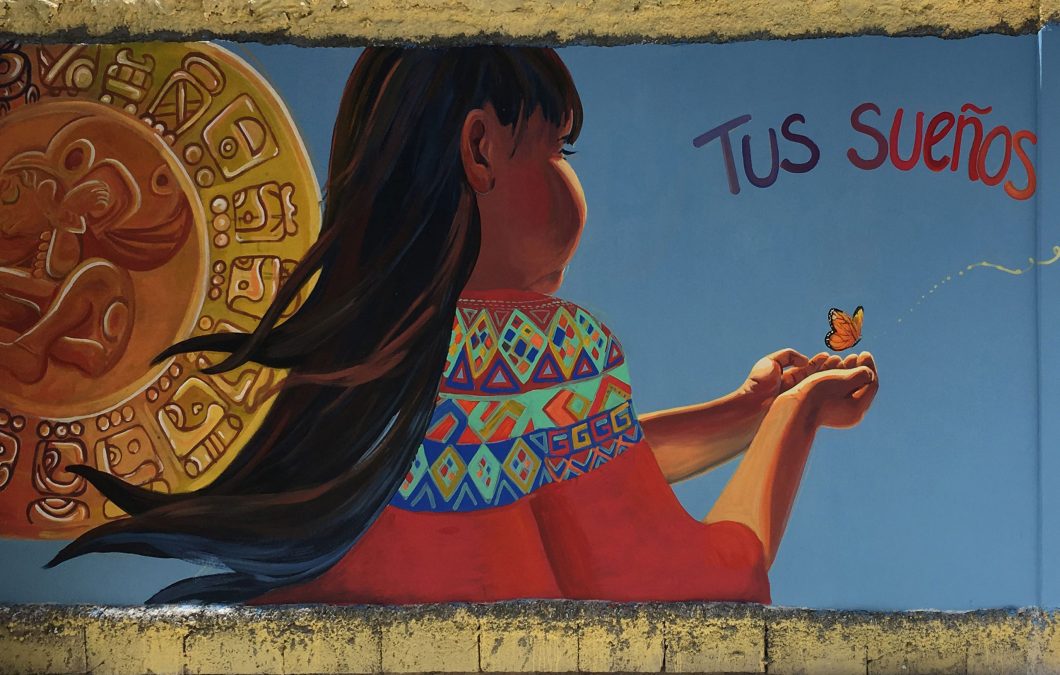Top Five Actions to Take to Move Your Mural Business Forward Next Week
- Write down your perfect mural project description. What is the subject? Where do you paint it? Who are you working with? Why? Be as specific as possible. That way, when projects similar to that come along, you will know to say yes, even if they’re approximate. And you’ll also kind of know where to start digging for the kind of projects you’re looking for.
- Paint your best mural yet. Maybe at your house, a family member, or on a friend’s wall. Notice how long it takes you, so you can better calculate how much you need to charge for your work. Take great photos of it. Ask the person that you did it for about their experience and suggestions for improvement so you get used to getting feedback on your work, which will be part of the commissioned painting process. If your grandma didn’t like working with you–you didn’t show up on time or your music was too loud–listen to that, and in the future adjust or be more clear about your creative process upfront, so your clients will know what to expect. Also, reflect on how the process was for you. What did you like about it? What worked? What didn’t?
- Put up a website and make sure it tells your story and features the kind of work you would like to get paid to create. People don’t want to see everything you can do, they want to see what you can do for them. Curate your online portfolio to showcase your specialty. Don’t show every pencil drawing or watercolor you’ve done. If you want to be painting murals, create a website presence that shows your mural art, so clients don’t have to poke around multiple pages to see what you can do: it’s front and center on your site.
- Decide on one form of ongoing marketing that you’re willing to participate in on a regular basis. Because you will need to stick with it for a few years at least, make sure it is a form of marketing that you enjoy. I like to write, so I spend a good chunk of time writing a monthly blog. I’ve been doing it every month for 10 years. I enjoy sharing my work that way, and it enables me to stay connected with my clients. Social media is an obvious choice, but also consider which platform, and how you want to use that in a way that is creative and enjoyable, so you will stick with it.
- Set a project minimum fee. ”No project is too small” is a terrible way to run a business. There’s a certain amount of time it takes to put together a project, including the design, client meeting, project preparation, and invoicing. If you have to do two hours of accounting, at least make sure the numbers are worth your while. You have a minimum amount of money you need to earn every month in order to stay fully employed as an artist, and you can only juggle so many projects (and do each one well) in a single month. Having a minimum is a signal that you are a professional. Your rates should be higher than a professional house painter, which is to say, your minimum project fee should be at least four digits.
And, a bonus:
6. Subscribe to Seth Godin’s blog. I have learned so much, and even more, received reassurance that my business strategies are sound when I prioritize craftsmanship, risk, win-win thinking, connection with my clients, and focus on process over making my product the best price, or most popular, or most efficient. The daily format is key because I read a book and forget about it, his blog helps me keep my eye on the ball on a daily basis.
No matter how many mistakes you make or how slow you progress, you are still way ahead of everyone who isn’t trying. – Tony Robbins
Take care,
Morgan
